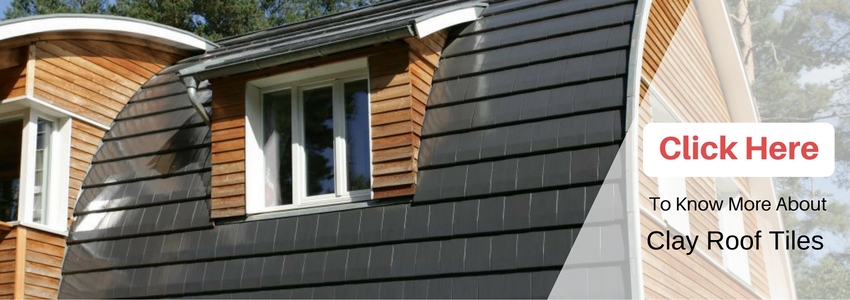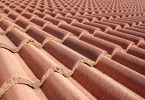The construction industry contributes majorly to the increasing level of pollution in the environment. It is considered as the most resource-hungry sector of urban development. It not only pollutes the soil, but also has detrimental impacts on air and water. It is responsible for around 4% of particulate emissions in the ecosystem. Nonetheless, our dependence on buildings for residential as well as commercial purposes is an inevitable need. The use of construction materials which are not eco friendly reap hazardous consequences on our healthy lifecycle. The construction sector uses around 400 million tons of material in a year, as reported by the UK Green Building Council. There are many buildings which still use drywall, steel roofing, concrete, vapor barriers and foam insulation during construction. The construction of these buildings account for 40% of water pollution, 23% of air pollution, 50% of climatic change and 50% of landfill wastes. These consume almost 40% of the worldwide energy usage! The problem lies in the very fact that people in order to live a comfortable life, forget to draw the correct differences between functionality and impression. As a result, proper evaluation of the construction materials becomes a secondary concern.
around Did you know that cement is one of the most harmful construction materials that mankind uses? The cement fabrication process requires heating of limestone, clay, and sand at around 1600 oC. Once the clinker mixture is formed, further energy is required to grind the clinker into a fine powder, thereby preparing it for the cooling process. This entire process of calcination and grinding processes account for 80% of energy consumption, while power for the cooler accounts for the remaining 20%.
So, the rising global concerns of pollution and climate change has stirred the need for eco-friendly buildings in our ecosystem. There is lot mankind has to do to save our future generations. So we need to start from the scratch collectively. Planting a tree is the most basic thing an individual can do, whereas industries should use equipment that generate less pollution. Green buildings are the next alternative to sustain our depleting resources from the harmful effects of pollution. In fact, it can be considered as the most promising alternative to saving our energy resources for the future times ahead. The implementation of “greens” in our living space has become an essential mandate for our sustenance these days. Whether incorporated in our urban lifestyle or generation of power using renewable energy, the world is now turning to structural designs of eco-friendly architecture. There is an immediate need to promote construction sustainably through the use of eco-friendly materials, such as bricks made of clay, facades made of naturally preserved materials, bamboo, clay roofing tiles, laminated wood plastic components to name a few. Eco-friendly builders create and enhance the homes and the surroundings through sustainable development. They can help the environment to a greater extent by employing the following factors channelizing energy efficiency while construction:
- Using energy-efficient and natural construction building materials
- On-site water treatment plants and recycling facilities
- Conserving power
- Construction waste material management
- Using green building materials
http://midequalitygroup.co.uk/events/list/?tribe-bar-date=2024-09-22 Key facets of a Green Building
-
Usage of Solar Energy
Solar energy is the best alternative for energy conservation. Most green buildings use solar energy in various ways to save unnecessary energy wastage. These are just not restricted to rooftops these days. In fact, many green buildings have channelized solar energy through its window panes! This reduces the building’s energy consumption. For eg., Willis Tower in Chicago has installed photovoltaic glass panels in some of its windows as a part of its pilot project towards energy conservation.
-
Water Recycle
Recycling of water is the most important feature in a green building. Builders adopt necessary measures to collect and recycle precipitation, thereby reducing the water consumption in green buildings. Both traditional and modern technologies are used in the process. For eg., rooftop tanks are constructed to hold the rainwater, which is then filtered and used for consumption. This is often known as rainwater harvesting. Such a technique is adopted by the Bank of America Tower and The Vancouver Convention Centre, so as to reduce the reliance on city water.
-
Inclusion of green space
Giving way to more plantation and fresh air in the living space is the key to having a healthy living environment. This can be done in many ways. Rooftop vegetation and green decor are the simplest ways to have a green environment. Edmonton International Airport has a 1,420 square foot “Living Wall” which features more than 8000 plants clung to it. It is a source of abundant oxygen in the premises. This serves as a breath of fresh air to the passing travellers.
-
Usage of recycled materials
An eco-friendly environment needs to save its depleting resources only via reuse and recycle. So, building construction materials should be recycled and reused on a timely basis. This should just not be constrained to the outer part of the building, but also the inner detailing. For eg., the Bay Adelaide Centre in Toronto reused recycled concrete, carpet and steel during its construction. The building’s heritage facade is also built out of renewable resources.
-
Usage of Wind Energy
Wind energy is a harmless and eco-friendly source of renewable energy, which is capable of enhancing the ‘greenness’ of a building. It can reduce greenhouse gas emissions in the environment and generate electricity without any hazardous impact on nature. This kind of energy is being implemented in the productive electric generation at Toronto’s Direct Energy Centre. This also enables the inclusion of fresh air in the buildings, if channelized properly.
Fact: A green building can lower energy consumption by 30-50% and water consumption by 30-70% says S Raghupathy, executive director, Confederation of Indian Industry (CII), and head of the CII-Sohrabji Godrej Green Business Centre.
Why Green Buildings?
Integration of energy efficiency measures is a necessity in the building industry today. There is a surge of healthy buildings in the ecosystem that will consume less natural resources than their equivalents. It is a responsibility of one and all to identify the need for the conservation of Earth’s precious resources. Development along the lines of sustainability is the sole objective of promoting Green Buildings in the ecosystem. These buildings, according to the Environmental Building Strategies, must accomplish the responsible usage of power, energy, water and raw materials. This has also triggered the demand in the consumer market, so as to how new environmental standards can be set by several builders under profitable green building projects.
In fact, green buildings provide financial benefits, a lot more than the conventional ones. It promotes cost savings and increases productivity. A green building has a longer lifespan and can positively impact a 20-year life cycle cost between $49.90 and $66.30 per square foot of building space. Due to its low operating cost and high-end productivity, it is expected that 10% of new green buildings would be constructed in the next two years. This is also appealing to the developers and builders because of its financial lucrativeness.
According to the CoStar Group, “ENERGY STAR buildings are selling for an average of $61 per square foot more than their peers, while LEED buildings command a remarkable $171 more per square foot.” Also, many local and state governments have regulated tax rebates and incentives to promote the growth of green buildings in the environment.
The optimum utilization of eco-friendly measures in construction can lead to a cleaner ecosystem development and help us achieve profitable sustainability. There is a need for striking a balance between a sustainable environment and house building techniques. Or else, the world would end without greens!
Carbon emissions that is the carbon footprint provide a useful metric for many aspects of green buildings and communities, including energy, water, solid waste, materials, and transportation, but green building involves more than reducing greenhouse gas emissions. When the building is designed and maintained as a green building with improved energy and water performance, the total emissions fall to 3,233 T, or 4.6 T per person. [usgbc].
Green building designs try to reduce dependency on energy from non-renewable sources as much as possible. Installation of natural elements such as solar panels to make use of energy from the sun, and design windows in a such a varied way that allows maximum natural light to let in and reduces the use of artificial light. These and other methods ensure that the building uses energy in the most efficient manner. Therefore, not only during construction but even after the finishing of a building too, green building helps the end consumer economically throughout the building lifespan.
Authored by a building expert from Wienerberger India
For more expert advice and tips on other ways to make your home eco-friendly – drop a word at our email id gosmartbricks@gmail.com












